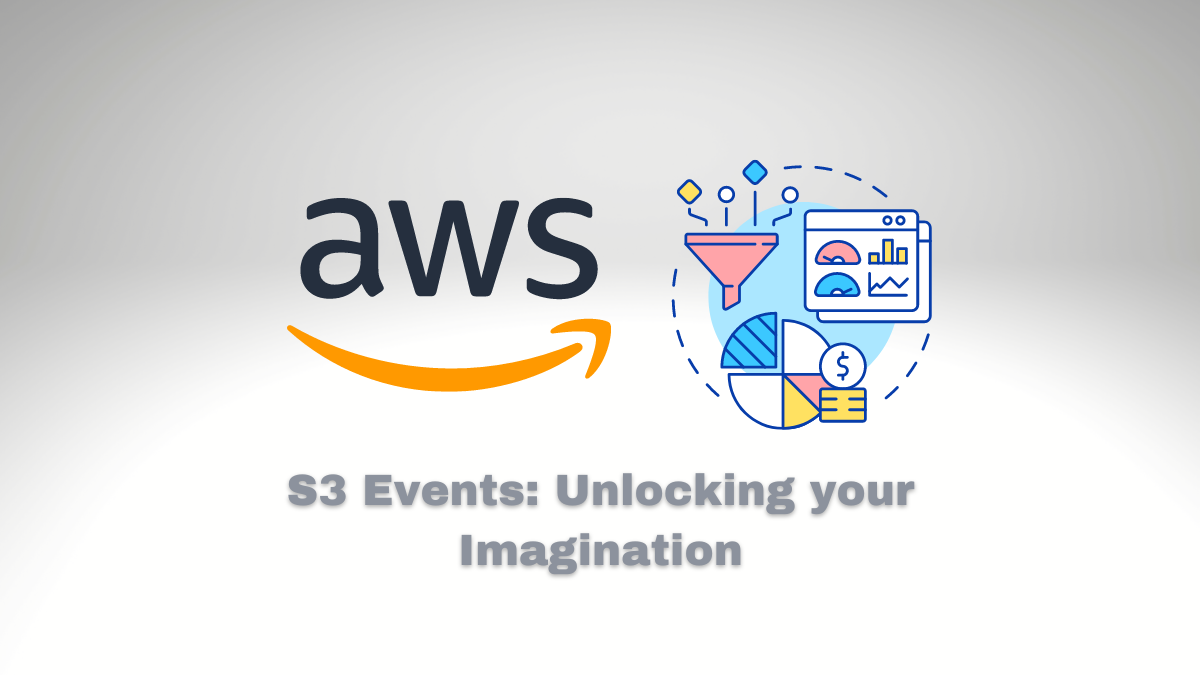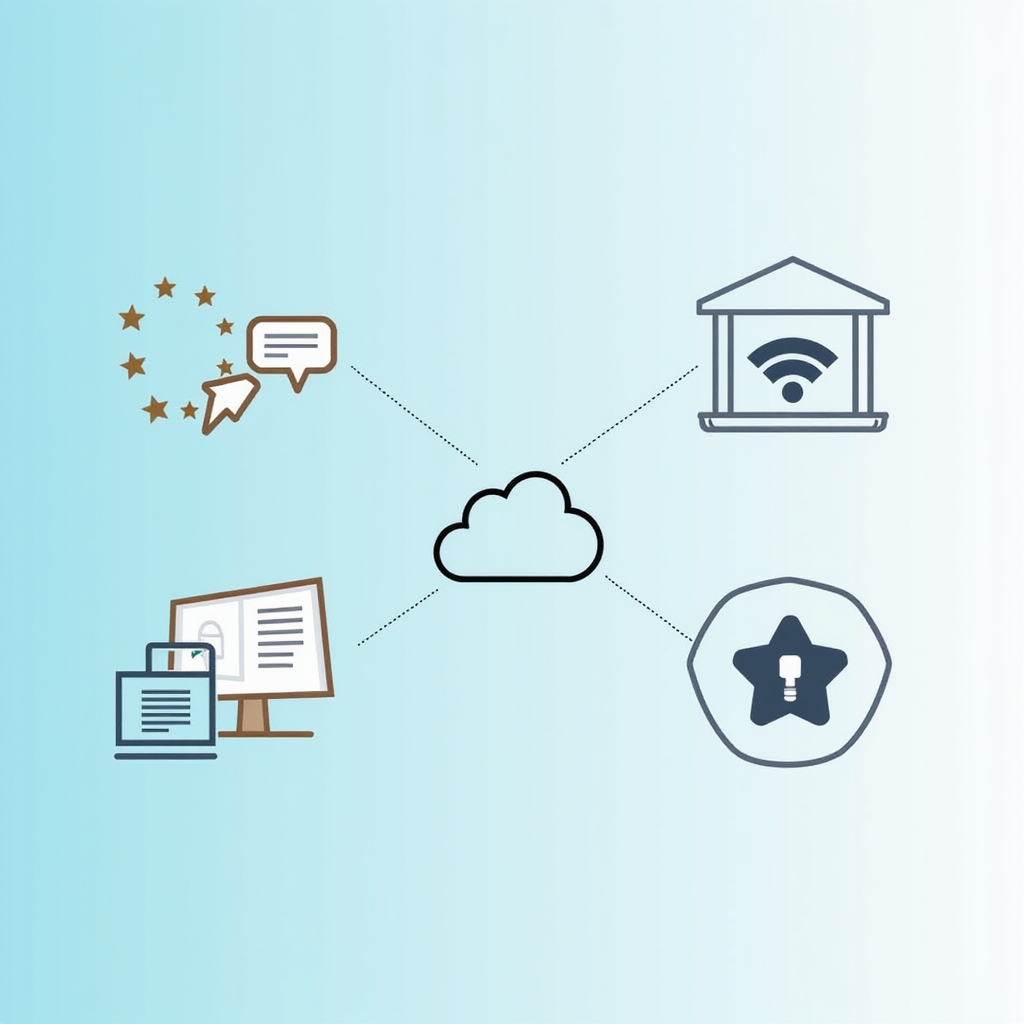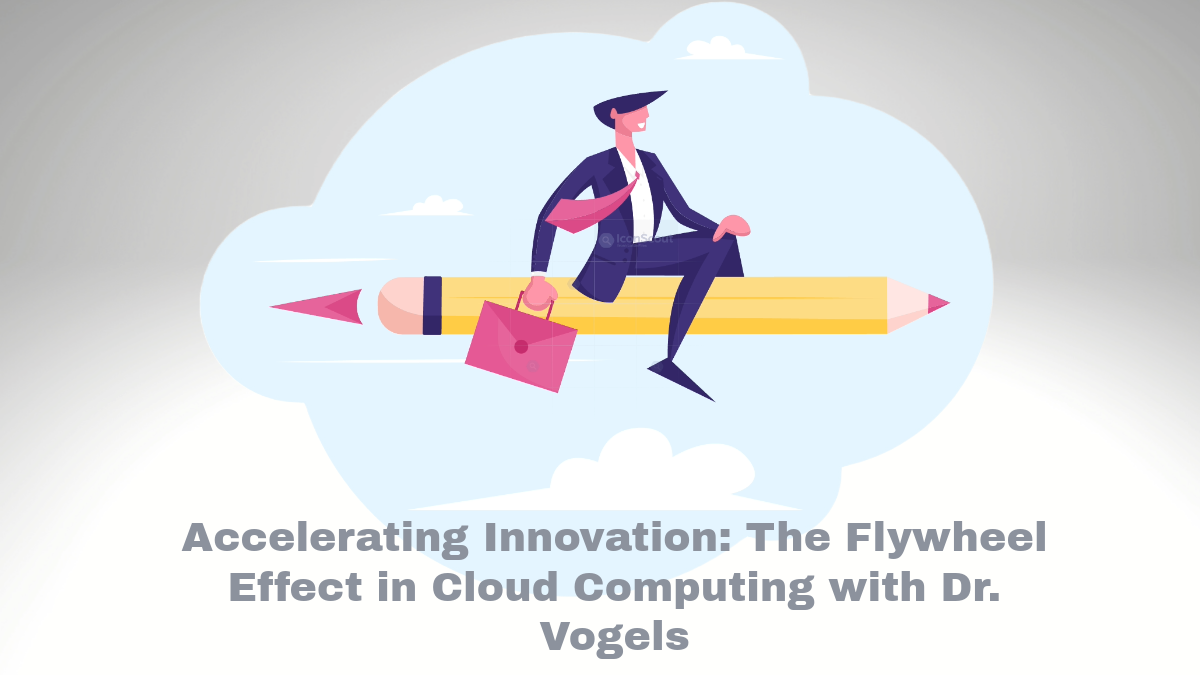S3 Events: Unlocking your Imagination

Amazon S3 (Simple Storage Service) is a leading object storage solution that offers unparalleled scalability, robust security measures, superior performance, and remarkable data availability. With the exclusive feature of S3 Events, you can trigger automated workflows or other user-defined actions in response to activities within your specified bucket.
With S3 events, you can be alerted of any object-level operations in a bucket, like the creation, deletion, or restoration. Through configuring these S3 events, action will then result from them, whether it is activating an AWS Lambda function or sending notifications to the Amazon SQS queue and Amazon SNS topic.
Here are the basic steps to set up an S3 event:
- Create an S3 bucket – If you don’t have an S3 bucket yet, create one in the AWS Management Console.
- Choose an event type – There are several types of S3 events, including object creation, object deletion, and object restoration.
- Configure the event – You can configure the event to trigger specific actions when the event occurs. For example, you might want to notify an Amazon SNS topic or trigger an AWS Lambda function.
- Set up the destination for the event – This can be an SNS topic, SQS queue, or Lambda function.
Once the S3 event is set up, the configured action will be triggered whenever an object is created, deleted, or restored in the S3 bucket.
Uses Cases:
S3 Events can be used to solve various business problems across different industries. Here are some real-world use cases for S3 Events:
Image and video processing – Many businesses require the ability to process and analyze large volumes of images and videos. S3 Events can trigger image and video processing workflows in response to new files uploaded to an S3 bucket. For example, an event can be triggered when a new image or video is uploaded to a specific S3 bucket, triggering a Lambda function to process the image or video, such as resizing, compressing, or converting the file format.
Log processing and analysis – Many businesses generate large volumes of log files that must be processed and analyzed in real-time. S3 Events can trigger log processing and analysis workflows when log files are uploaded to an S3 bucket. For example, an event can be triggered when a new log file is uploaded to an S3 bucket, which can trigger a Lambda function to process and analyze the log data, such as identifying patterns or anomalies.
Real-time data processing – Many businesses require real-time data processing from multiple sources, such as IoT sensors, social media feeds, or online transactions. S3 Events can trigger real-time data processing workflows when new data is added to an S3 bucket. For example, an event can be triggered when a new data file is uploaded to an S3 bucket, triggering a Lambda function to process and analyze the data, such as aggregating, filtering, or transforming the data.
Backup and disaster recovery – Many businesses require regular backups of critical data and systems to protect against data loss and disasters. S3 Events can trigger backup and disaster recovery workflows when new files are uploaded to an S3 bucket. For example, an event can be triggered when a new backup file is uploaded to an S3 bucket, triggering a Lambda function to copy the file to another S3 bucket or region for disaster recovery.
Marketing and advertising – Many businesses use data-driven marketing and advertising strategies to target and engage customers. S3 Events can trigger marketing and advertising workflows when new data files, such as customer behavior logs or purchase history data, are uploaded to an S3 bucket. For example, an event can be triggered when a new data file is uploaded to an S3 bucket, which can then trigger a Lambda function to analyze the data and trigger targeted marketing and advertising campaigns.
These are just a few examples of how S3 Events can be used to solve business problems. The flexibility and scalability of S3 Events make it a powerful tool for building event-driven workflows across a wide range of use cases.
Receive Notifications on your phone (Example)
To receive alerts on your Android phone when a file in S3 is changed, you can use SNS (Simple Notification Service) in combination with S3 events. SNS is a fully managed notification service that makes it easy to set up, manage, and send notifications to multiple endpoints, including email, SMS, mobile push, and HTTP endpoints.
Here’s how you can set up S3 event notifications to trigger an SNS notification to your Android phone:
- Create an SNS topic – In the SNS console, name a new topic, such as “S3 File Change Alerts”. Note the topic’s ARN (Amazon Resource Name), which you will need to use later in the S3 event configuration.
- Create an S3 bucket – If you don’t already have an S3 bucket, create a new one and upload the file you want to monitor for changes.
- Configure the S3 bucket for event notifications – In the S3 console, select the S3 bucket you want to monitor and click the “Properties” tab. Under “Events”, click “Add notification” to create a new notification configuration.
- Choose the S3 event type – Select the S3 event type you want to monitor for changes, such as “ObjectCreated” or “ObjectModified”. You can also specify a prefix or suffix for the file name if you only want to monitor changes to specific files.
- Choose the SNS topic as the destination – Select the SNS topic you created in step 1 for the event notification. Specify the message format you want to use for the notification, such as JSON or text.
- Configure the SNS notification endpoint – Create a new subscription to the SNS topic using the protocol “SMS” in the SNS console. Enter your mobile phone number as the endpoint, including the country code. You will receive a confirmation message on your phone that you must respond to confirm the subscription.
Once you have completed these steps, you will receive an SMS notification on your Android phone whenever the specified file in your S3 bucket is created or modified. You can customize the notification message and format in the SNS console and set up additional subscriptions to the same topic for other types of endpoints, such as email or HTTP.
S3 Events – Cost
The cost of using S3 Events depends on a few factors, including the number of events triggered, the type of destination used (e.g., SNS topic, SQS queue, Lambda function), and the number of requests made to the destination. Here are some key cost considerations:
- S3 Event charges – AWS charges $0.0025 per 1,000 events for all event types except “Replication,” which is charged at $0.02 per 1,000 events.
- Destination charges – Depending on the destination you choose (e.g., SNS topic, SQS queue, or Lambda function), additional charges for requests made to the destination may exist. For example, SNS charges $0.50 per 1 million mobile push notifications and $0.06 per 100,000 email notifications.
- Data transfer costs – If you use S3 events to trigger data transfers to another AWS service, such as Amazon EC2 or Amazon RDS, data transfer costs may be associated with those services.
It’s important to note that the cost of using S3 Events will vary depending on your specific use case and the volume of events triggered. However, based on the pricing listed above, if you trigger 1 million S3 events per month, the cost would be approximately $2.50. If you use SNS as the destination and trigger 1 million email notifications, the cost would be approximately $0.60.
Overall, S3 Events is a cost-effective way to automate workflows and respond to changes in your S3 bucket. However, it’s essential to carefully consider your specific use case and the associated costs before implementing S3 Events.
Event Bridge or native S3 events?
EventBridge is a serverless event bus service that allows you to connect and integrate different AWS services and applications in a scalable and flexible way. It provides a central event management system to route events from multiple sources to multiple targets, such as AWS Lambda functions, Amazon SNS topics, and AWS Step Functions.
While S3 Events is a service specifically designed to monitor and respond to events in an S3 bucket, EventBridge provides a more generalized event-driven architecture for your entire AWS environment. So, when should you use EventBridge instead of the native S3 Events? Here are some scenarios where EventBridge may be a better fit:
- Multi-source, multi-target event routing – If you need to route events from multiple sources to multiple targets across your AWS environment, EventBridge is a more powerful and flexible solution than S3 Events.
- Integration with non-S3 services – If you need to integrate S3 events with other AWS services or third-party applications, EventBridge provides a centralized event management system that can be used to route events to a wide range of targets.
- Complex event processing – If you need to perform complex event processing, such as filtering, aggregating, or transforming events, EventBridge provides more advanced event processing capabilities than S3 Events.
- Advanced event routing – If you need to route events based on a wide range of criteria, such as event attributes, event history, or event patterns, EventBridge provides more advanced routing capabilities than S3 Events.
In general, if you need a centralized event management system that can be used to route events from multiple sources to multiple targets and you need more advanced event processing and routing capabilities, EventBridge is likely to be a better fit than S3 Events. However, if you only need to monitor events in an S3 bucket and trigger simple workflows in response to those events, S3 Events may be a simpler and more cost-effective solution.
Conclusion
In conclusion, Amazon S3 Events is a cost-effective and robust service that you can use to monitor and react to changes in an S3 bucket. However, depending on your specific use case and the volume of events triggered, it may be more cost-effective or powerful to use AWS EventBridge instead. Before implementing S3 Events or EventBridge, consider the associated costs and features to ensure you choose the best solution.
Whichever event management system you choose, you can rest assured that it will help you automate your workflows and respond quickly to changes in your AWS environment.
Thank you for reading! We hope this blog has helped you better understand the features and benefits of using S3 Events and EventBridge. Take one time to download our AWS Learning kit and improve your AWS Skills.
Training doing some questions below!
Good luck!
Training – Questions
What happens when an S3 event trigger invokes an AWS Lambda function?
a) The Lambda function triggers a new S3 event
b) The Lambda function modifies the object in the S3 bucket
c) The Lambda function performs an action based on the S3 event
d) The S3 event trigger is paused until the Lambda function finishes executing
Answer: c) The Lambda function performs an action based on the S3 event
Which AWS service allows you to create custom rules for routing events from various sources to targets?
a) S3 events
b) AWS CloudTrail
c) AWS Event Bridge
d) AWS Lambda
Answer: c) AWS Event Bridge
Which of the following AWS services would you use to filter and transform events from an S3 bucket?
a) Amazon CloudWatch
b) AWS Event Bridge
c) Amazon SNS
d) AWS Lambda
Answer: d) AWS Lambda
What is the maximum number of S3 events that can be delivered per second in a single AWS account?
a) 100
b) 1,000
c) 10,000
d) 100,000
Answer: c) 10,000
Which of the following is a use case for using S3 events with AWS Lambda?
a) Performing real-time analysis of data in an S3 bucket
b) Archiving data to an S3 bucket
c) Storing logs in an S3 bucket
d) Running batch processing jobs on data stored in an S3 bucket
Answer: a) Performing real-time analysis of data in an S3 bucket
How can you ensure that an S3 event trigger only processes events for a specific S3 bucket and prefix?
a) Use AWS IAM policies to restrict access to the S3 bucket
b) Use a Lambda function to filter events based on the bucket and prefix
c) Configure the S3 event trigger to only listen for events from the specific bucket and prefix
d) Use AWS Config to track changes to the S3 bucket
Answer: c) Configure the S3 event trigger to only listen for events from the specific bucket and prefix
What is the purpose of the Event Bridge schema registry?
a) To store schemas for events that can be used for validation and transformation
b) To store AWS CloudTrail events for compliance purposes
c) To store Lambda functions that can be triggered by events
d) To store events that can be monitored by Amazon CloudWatch
Answer: a) To store schemas for events that can be used for validation and transformation
Which AWS service allows you to create rules that trigger actions based on S3 events, CloudWatch events, and other sources?
a) AWS CloudTrail
b) AWS Event Bridge
c) Amazon SNS
d) AWS Lambda
Answer: b) AWS Event Bridge
What is the purpose of an S3 event?
a) To notify an AWS Lambda function when an object is created or deleted in an S3 bucket
b) To replicate objects between S3 buckets
c) To encrypt objects stored in an S3 bucket
d) To trigger an Amazon SNS notification when an object is modified in an S3 bucket
Answer: a) To notify an AWS Lambda function when an object is created or deleted in an S3 bucket
What is the maximum number of rules associated with an Event Bridge rule?
a) 50
b) 100
c) 200
d) 500
Answer: d) 500
Do you want to learn more? Download our AWS Learning Kit.
Here are some Questions to make you some reflections and deeply understand the content:
What is the difference between S3 events and Event Bridge, and how do you decide which one to use for a given business use case?
A. S3 events are focused on event-driven processing within an S3 bucket, while Event Bridge provides a centralized event bus for integrating multiple AWS services. The decision on which to use depends on the nature of the use case, such as the number and types of services involved, the desired level of control over event routing, and the need for custom processing and analysis.
How can you ensure that S3 events trigger only when a file is fully uploaded and not during the intermediate stages of the upload process?
A. S3 provides an option to set the event trigger for S3 events to “ObjectCreated:CompleteMultipartUpload” rather than “ObjectCreated”. This ensures that the event is only triggered when the upload is complete and not during the intermediate stages.
Can you use Event Bridge to trigger a Lambda function based on an S3 event, and how does this differ from directly triggering the function from S3?
A. Yes, you can use Event Bridge to trigger a Lambda function based on an S3 event. The main difference is that by using Event Bridge, you can enable more complex routing and filtering of events and include events from other sources besides S3.
How can you use Event Bridge to process large numbers of S3 events without overwhelming your downstream resources?
A. One way to address this is to use EventBridge Rules to filter and throttle the events before they are sent to the target service. This can include filtering based on attributes, event patterns, or batch sizes and applying a rate limit or buffering strategy.
What is the difference between a push-based and a pull-based model for event processing, and how does this relate to S3 events and Event Bridge?
A. A push-based model sends events directly to downstream services, while a pull-based model requires the downstream service to request events from a central source. S3 events use a push-based model, while Event Bridge supports push and pull-based models through its event bus and partner integrations.
Can you use S3 events to trigger a message on an external platform like Slack or Microsoft Teams?
A. Yes, you can use S3 events to trigger a message on an external messaging platform by routing the event to an intermediary service that can parse the event and generate the message. This can be done using AWS Lambda, AWS Step Functions, or a third-party service such as Zapier.
How can you ensure that authorized services or users only process S3 events, and what are some best practices for securing S3 event processing?
A. One way to secure S3 event processing is to use AWS Identity and Access Management (IAM) policies to control access to the S3 bucket and the event processing services. This can include granting access based on resource-level permissions, restricting the types of events that can be processed, and using VPC endpoints for secure communication.
What are some use cases for S3 events and Event Bridge in the context of data warehousing and analytics?
A. S3 events and Event Bridge can trigger data processing and ETL workflows based on new or updated data in an S3 bucket and trigger notifications or alerts when specific conditions are met. This can support various data warehousing and analytics use cases, including data integration, data quality management, and predictive modeling.




Comments